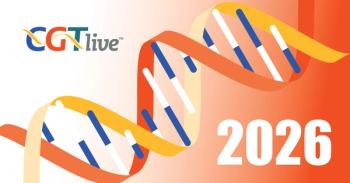
Novel Bispecific T Cell Engager BI 764532 Shows Manageable Tolerability in DLL3+ SCLC and Neuroendocrine Carcinoma
Additionally, promising efficacy signals were reported—namely response rates and disease control rates—in the phase 1 clinical trial (NCT04429087) data that were presented at the 2023 ASCO Annual Meeting.
BI 764532, a novel DLL3-targeting T-cell engager developed by Boehringer Ingelheim, has shown clinically manageable tolerability in an ongoing phase 1 clinical trial (NCT04429087) of patients with DLL3-positive small cell lung cancer (SCLC) and neuroendocrine carcinoma (NEC), with a maximum tolerated dose not yet reached at the doses administered to date. The therapy was administered in 8 dose levels, with doses of 90 μg/kg or higher showing the most promise for these patients.1,2
The data were presented by lead study author Martin Wermke, MD, head of the Early Clinical Trial Unit of the National Center for Tumor Diseases Dresden at the University Hospital Carl Gustav Carus, in Dresden, Germany, at
At doses of 90 μg/kg or higher, the overall response rate (ORR) was 25% in the overall population (n = 71), and the disease control rate (DCR) was 52%. Responses achieved with the T-cell engager appeared to be durable, according to Wermke, with the median duration of response not having been reached. “We did see a promising efficacy signal…which did not seem to be restricted to any of the disease entities studied,” Wermke said.
In total, there were 5 dose-limiting toxicities (DLTs) reported in the trial, all of which were reversible with all patients recovering. Those DLTs included grade 3 or 4 cytokine release syndrome (CRS; n = 2), grade 3 confusion state (n = 1), grade 2 infusion-related reaction (n = 1), and grade 3 nervous system disorder (n = 1).
“At clinically efficacious BI 764532 dose levels, safety is clinically acceptable and manageable,” Wermke said in a presentation of the data. “The drug discontinuation rate due to treatment-related adverse effects was low—at just 4%. We did see a lot of CRS as you would expect for a bispecific antibody, but mostly of grade 1 and 2 and easily managed with standard supportive care measures.”
As of March 2023, 107 patients had been enrolled in the trial. Of those, 57 patients had SCLC, 41 had epNEC, and 9 had large cell NEC. The median age of these patients was 60 years (range, 32-79) and 57% were male. Most patients (67%) received 1 to 2 prior lines of therapy, and 31% had received 3 or more prior lines, with nearly half (49%) of the patients previously receiving a PD-1 or PD-L1 inhibitor. On measures of Eastern Cooperative Oncology Group (ECOG) performance status, 26% of the cohort had a status of 0, and 73% had a status of 1. All told, 38% and 56% of patients had brain or liver metastases, respectively.
Additional efficacy findings showed that BI 764532 resulted in a DCR of 51% in those with SCLC, 44% in those with epNEC, and 100% in those with large cell NEC. Of the 18 responses observed, 14 were still ongoing at the cutoff date. “We do have responders who responded for around a year or even more,” Wermke said in his presentation. Tumor shrinkage was also observed across every tumor type included in the trial. BI 764532 elicited an ORR of 26% in those with SCLC (n = 39), 19% in those with extrapulmonary neuroendocrine carcinoma (epNEC; n = 27), and 60% in those with large cell NEC (n = 5).
Wermke shared a case of the use of BI 764532 from his own practice, in a woman who experienced an early relapse following curative-intent radiochemotherapy for SCLC. “This was not only a local relapse, but also new onset visceral metastases that is exemplified here, in the pancreas,” Wermke said. The relapse and the pancreatic metastases reported observed shrinkage 6 weeks after beginning treatment with BI 764532, which he noted was “maintained and deepened in the most recent CT scan done 1 year after initiation of treatment.”
The trial is a first-in-human, open-label, dose-escalation trial in adults with locally advanced/metastatic centrally confirmed DLL3+ SCLC, NEC, small cell carcinoma of any other origin grouped as NEC, or large cell NEC. The treatment was administered intravenously (IV) in the trial in 3 regimens: Regimen A, a fixed IV dose every 3 weeks; Regimen B1, a fixed IV dose once weekly; and Regimen B2, consisting of step-in doses followed by a fixed dose (which was developed based on the emerging pharmacokinetic data, Wermke said). Further objectives were safety, tolerability, pharmacokinetics and pharmacodynamics, and preliminary efficacy based on investigator review.
Wermke noted in the presentation that the inhibitory Notch ligand, DLL3, is greatly expressed on the cell surface of both SCLC and NEC tumors, making it a promising drug target—and one of the binding sites of the bispecific antibody. “DLL3 is virtually absent from the surface of any healthy adult human tissue,” Wermke noted. “With the other part of the molecule, BI 764532 binds to CD3, thereby redirecting T cells to the tumor sites and inducing immunocytolytic cell death, as has been shown in extensive preclinical in vivo and in vitro experiments.”
REFERENCES
1. Wermke M, Felip E, Kuboki Y, et al. First-in-human dose-escalation trial of BI 764532, a delta-like ligand 3 (DLL3)/CD3 IgG-like T-cell engager in patients (pts) with DLL3-positive (DLL3+) small-cell lung cancer (SCLC) and neuroendocrine carcinoma (NEC). J Clin Oncol. 2023;41(suppl 16):8502. doi:10.1200/JCO.2023.41.16_suppl.8502
2. A study to test different doses of BI 764532 in patients with small cell lung cancer and other neuroendocrine tumours that are positive for Delta-Like Ligand 3 (DLL3). ClinicalTrials.gov. Updated May 16, 2023. Accessed June 4, 2023. https://clinicaltrials.gov/ct2/show/NCT04429087
Newsletter
Stay at the forefront of cutting-edge science with CGT—your direct line to expert insights, breakthrough data, and real-time coverage of the latest advancements in cell and gene therapy.






























